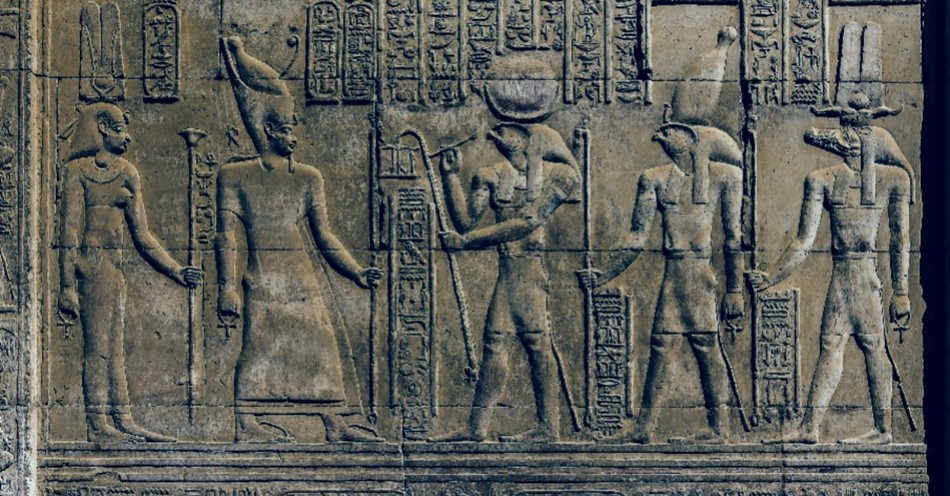“In the beginning, God created the heavens and the earth” (Genesis 1:1). God therefore created time, and so starts the chronology of the world. God formed the sun as “the greater light to rule the day,” and the moon as “the lesser light to rule the night” (Genesis 1:16). It’s natural to wonder about the myriad events God placed into motion and how He organized them within His plan for humanity. God fashioned the seven days on which our calendar rotates: 24 hours in each day, seven days in each week, and 52 weeks in each year (based on our current Gregorian calendar system of months containing 28, 30, or 31 days. The Hebrew calendar is based on a 30-day month, according to the moon’s and sun’s cycles). When did intentional calendars come into existence, and what do the designations BC and AD signify?
What Does BC Stand For?
BC is our acronym for Before Christ. The Lord Jesus Christ is the reference point for our calendar, and everything that happened before He came into the world is designated as that which occurred in advance of His coming in the flesh (John 1:1-5).
The classification of BC and AD (Anno Domini-in the year of our Lord) began (but was not titled as such) during the Roman rule in the early centuries. They based their calendar upon who ruled as emperor or upon specific landmark events in its history. It is obviously very important to Christians to mark the years based on the life of Jesus, and so it became the prevailing method that stands to this day. One of the earliest to designate AD was Dionysius Exiguus, a monk who sought to discern the exact date on which to celebrate Resurrection Sunday. The use of BC, it is thought, came about because of Bede, an Anglo-Saxon monk, and Dionysius Petavius, a Jesuit historian and theologian. Both were Christian writers who included terms meaning “before Christ” in their writings. Isaac Newton knew of these works and used “before” instead of the Latin word, ante. It wasn’t until the seventeenth and eighteenth centuries that the common use of BC and AD became prevalent. A BC date, e.g., is written 200 BC. An AD date is written A.D. 2021.
Why Is World History Divided by BC and AD?
Jesus Christ is the cornerstone of all world history. Outside of Him, nothing has, will, or ever will happen (John 1:1-5). The birth of Jesus is the turning point between BC and AD—BC, no Jesus in the flesh—AD, Jesus in the flesh. John the Baptist was the last of the Old Testament prophets, and he served as the one who prepared the way of the Lord and heralded His arrival (Isaiah 40:3, Matthew 3:3, John 1:29-32). He is the human equivalent of a clock that hits a negative one and immediately resets to one (there exists no year “zero”).
Why Is it Important to Know the Old and New Testament?
As Christians, we view the Old Testament as the 39 books which include the Law (Genesis—Deuteronomy), History (Joshua—Esther), Wisdom (Job—Song of Solomon), Major Prophets (Isaiah—Daniel), and Minor Prophets (Hosea—Malachi). Poetry also takes a stage in the books of Job, Psalms, Proverbs, and the Song of Solomon). Prophecy is a part of many of the Old Testament books (in most part regarding the coming Messiah). Different forms of prose do not detract from Scripture; they instead enhance how we engage with the Scriptures and receive an understanding of what the Lord presents to us.
The 27 New Testament books encompass the Gospels (Matthew—John), History (Acts), Epistles (1 Corinthians—Jude), and Apocalyptic Literature (Revelation).
All the Old Testament books were written BC, and those were the Scriptures to which Jesus referred when He confronted the devil (Matthew 4:1-11). He also mentioned certain Old Testament passages when He challenged the Pharisees’ and scribes’ doctrine in Matthew 12, 19:3-9, Mark 7:6-13, e.g.).
Jesus gives them (and us) the definitive reason for knowing the Old Testament in John 5:39 when He answers the group of Jews who questioned His authority and His deity (John 5:1-18). In verse 39 (emphasis added), Jesus states the fact of the matter, “You search the [Old Testament] Scriptures, for in them you think you have eternal life; and these are they which testify of Me.”
Throughout the Old Testament, Jesus is intimated through prophecy (Genesis 3:14-15, Psalm 16:10, Psalm 69:9, Isaiah 7:14, Malachi 4:5-6, Micah 5:2, e.g.), Christophany (Genesis 16:7-11, Numbers 22:22-35, Judges 6:21, e.g.), and inference (see Hebrews 9:18-22, wherein the Law includes the entire worship structure of the Old Testament as a copy of heavenly realities). Hebrews 10:1-4 refers to the Law as a “shadow of the good things to come…” This copy—this shadow—infers Christ. Some people may ask why we need to invest ourselves in the Old Testament. A well-known quote about what is to be found in the Old and New Testaments is, The Old Testament is the New Testament concealed, and the New Testament is the Old Testament revealed. Knowing both gives the Christian reader a holistic look at God’s order, His character, His plan of redemption, His commandments, and His dealings with us. To look at only one and not the other is incomplete and will leave us with questions that may only be answered by the entire Bible (Proverbs 9:10). 2 Timothy 3:16-17 speaks of All Scripture being for our usefulness. It doesn’t say part; it says all. It also equips us to live godly lives. Besides, the Old Testament is replete with history—a history which captivates us with the wondrous works of God (Creation, the Flood, the parting of the Red Sea, etc.), and we can believe it all because of the inerrancy and infallibility of Scripture.
The New Testament, well, it’s glorious in its Gospels—the account of Jesus incarnate. It’s momentous in its history, instructive in its Epistles, and hopeful in its promise of Jesus yet to come and manifest His earthly kingdom. On the very day of the Resurrection, two men were on the road to Emmaus and were deep in discussion about what had transpired concerning Jesus. Jesus drew near and asked them about their conversation (They did not realize it was Him). Their reply is almost humorous, as they said, “Are you the only stranger in Jerusalem, and have You not known the things which happened there in these days?” They did not know they were speaking with the only One who knew everything happening and every implication of it (Luke 24:13-17, emphasis added).
We as believers are in the “already-not-yet,” meaning the kingdom is in us as God’s children (John 15:19), but we await His glorious appearing (Titus 2:11-14).
Our look at the why of the New Testament is contained in John 20:30-31 and 1 John 5:11-13 —that we may know Jesus is the Christ, the Son of God, and by believing, we have eternal life in His name.
Why Should Christians Know about BC?
When someone thinks of events before Christ (BC), they ponder a time when He did not yet appear in flesh on earth. Having the knowledge that the people of the Old Testament longed to have God’s salvation plan revealed to them (Matthew 13:17), we live in a privileged time of having Christ revealed. As mentioned above, all history points to Him—what He has done, is doing, and will do. BC sets our sights on the most important historical fact ever—the birth, life, death, and resurrection of Jesus Christ. Before Christ, the hope of people rested in a sacrificial system which relied on the blood of bulls and goats, etc.—a system which saved no one (Hebrews 3:1-6; 4:14-16; 7:19, 23-28). All of time BC points to the Redeemer, the Lord Jesus Christ, who saves us from our sin (John 3:16).
Secularists (and even some Christians) since the 17th century have decided to use BCE (Before Common Era) and CE (Common Era) and foist its usage to try to limit the attention given to Jesus Christ.
No matter what designation you use, however, know the Lord Jesus was and remains the reference point for all recorded dates in history.
© iStock/Getty Images Plus/stigalenas



